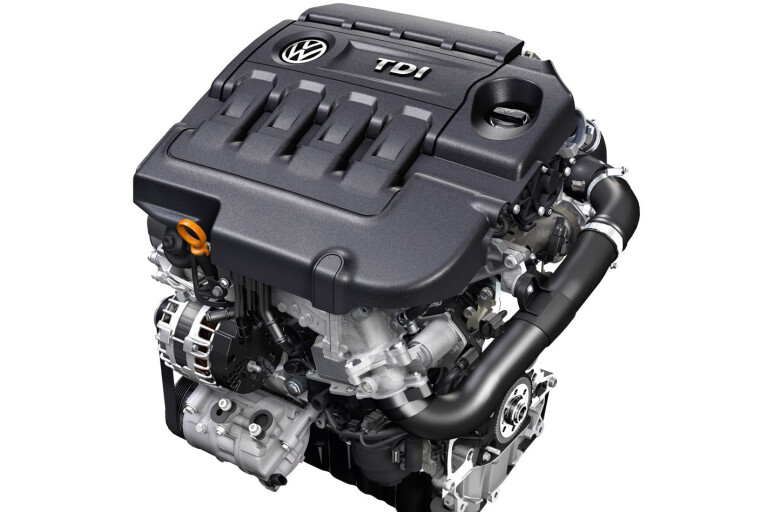
The automotive industry and western government bureaucracy have rarely been good mates and, ironically, the home of the greatest car industry the world has ever known has also fathered some of the most zealous government bureaucracies, seemingly hell-bent on regulating that same car industry out of existence.
I’m talking about the US of A; a country where a once-mighty auto industry is on its knees thanks to the government’s seemingly all-powerful Environmental Protection Agency (EPA). That’s the same country where another arm of its government is propping up what’s left of its auto industry via the Automotive Industry Financing Program.
The latest outbreak of hostilities in this ongoing war is the Volkswagen diesel engine scandal. As is well documented now, VW installed hidden ‘cheat’ software in the engine programming of various four-cylinder diesel engines so that they could pass exhaust emissions standards tests for nitrogen oxides, collectively known as NOx.
Due to their high combustion pressures and their lean-burning nature, diesel engines produce much greater amounts of NOx than petrol engines, a major problem in their ‘greening’ despite the fact that diesel engines have otherwise found favour thanks to their lower production of carbon dioxide.
Volkswagen was busted in the USA, where EPA standards for NOx are particularly stringent. The EPA system is based on a manufacturer’s fleet-average emissions. It allows manufacturers to sell dirtier cars as long as there are cleaner models to compensate.
Under the EPA’s current Tier 2 system, which was introduced in 2004 and fully implemented by 2009, manufacturers allocate individual models to what the EPA calls ‘Bins’, where each Bin has its own suite of standards for various exhaust-gas pollutants, NOx included.
The VWs in question (Jetta, Passat, etc) were allocated to Tier 2 Bin 5, a particularly clean Bin that allows just 0.05gm/mile of NOx. Unfortunately for VW, Tier 2 Bins 9 to 11, which allowed up to 0.6gm/mile of NOx were closed in 2009. Had they still been open after 2009, VW may not be in the trouble it is now.
VW’s sins should also be looked at in the context of the monster pick-ups trucks so favoured in the USA – these trucks are not required to meet the same standards as smaller vehicles, so they can be much dirtier but still legal.
Making matters far worse for VW is the fact that the so-called ‘defeat’ software has been apparently fitted to some 11 million vehicles worldwide. In some markets, like Australia, the emissions standards are more lenient than in the USA and may not have required the defeat software to meet the standards in play at the time.
According to Outback Australia Travel’s Allan Whiting, this isn’t the first time that defeat software has been used to circumvent EPA standards. In 1998 no fewer than seven heavy-truck diesel-engine makers in the USA were found to have used ‘cheat’ engine software in order to pass EPA tests.
The engine makers in question – Caterpillar, Cummins, Detroit Diesel, Mack, Navistar-International, Renault and Volvo – were found guilty of violating the US Clean Air Act and were forced to make huge compensation payments.
Ironically, they then successfully countersued the EPA for unrealistic emissions expectations, which in turn forced the EPA to relax some standards.
The latest news is that VW is accused of also cheating fuel-consumption and related carbon-dioxide (CO2) test results on some models in Europe, although this is something seemingly far more widespread, as most new vehicles fail to achieve real-world fuel consumption/CO2 that matches government-mandated test figures. In Australia this figure is quoted on the yellow windscreen labels attached to new cars (see False Economy, below).
If all this is bad news for the auto industry, there’s worse to come.
In the USA, the EPA plans to introduce Tier 3 emission standards in 2017. In doing so, this will bring the EPA mandate into line with the even stricter Californian Air Resources Board (CARB) standards. In Europe, stricter regulations are proposed for 2020.
All of this could conceivably spell the end of diesel engines – and the diesel engines most at threat are those that power the popular large 4x4 wagons and dual-cab utes.
False Economy
The fuel-consumption figures on the yellow windscreen labels on all new cars sold in Australia relate to Australian Design Rule 81/02. In this test, the vehicle isn’t driven in the real world but run through a test sequence in a lab, on rollers.
The test covers a theoretical 11km and is done in two parts; the Urban Cycle consists of a cold start then a series of accelerations, steady speeds, decelerations, and idling. The maximum speed is 50km/h, the average is 19km/h and the distance ‘covered’ is 4km.
The Extra-Urban Cycle is conducted straight after and consists of steady speed for about half the test, with acceleration, deceleration and idling for the other half. The average speed is 63km/h with one spike to 120km/h. The distance is 7km.
The Urban and Extra-Urban figures are quoted separately and tallied for the Combined Cycle. Combined Cycle figures are consistently lower than real-world figures, the disparity seemingly increasing with engine and drivetrain sophistication.

COMMENTS